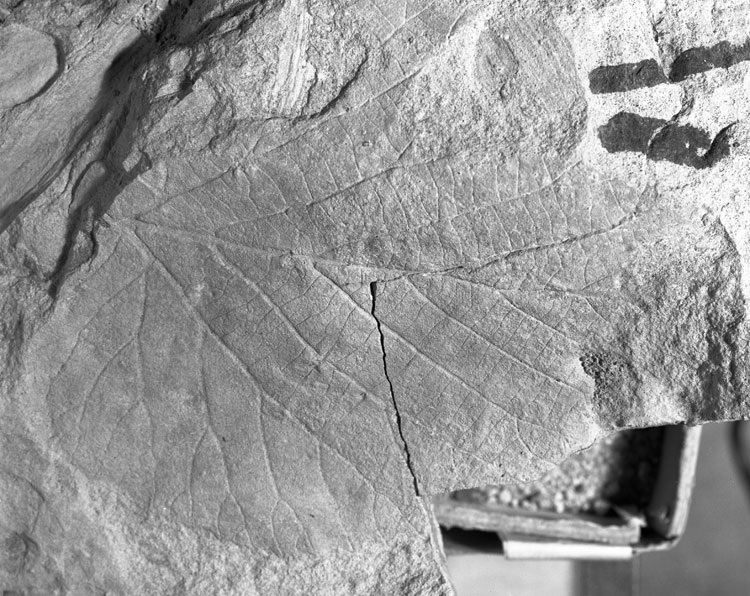Locality
USGS11493
69.328° -153.011°
Ikpikpuk River Area, Tommy Creek
17-24 m high bluffs on the east side of Tommy Creek consists of coal beds overlain by a gray bentonitic clay. This is capped by a gray siltstone and conglomerate. Probably representing the Tuluvak Tongue of the Prince Creek Formation, this locality yielded abundant plant debris and some whole leaves from the siltstone.
Description
Leaf: simple; symmetrical; shape unknown, probably ovate or wide ovate; apex missing; base missing; margin dentate, teeth with obtuse angular apices and shallow rounded sinuses, teeth slightly irregular in size and spacing; venation actinodromous suprabasal (im)perfect marginal; primary midvein moderate more or less straight; a-pectinal veins moderate, slightly weaker than the midvein, more or less straight, arising at an angle of approximately 40°; a-pectinal abmedials arising at angles of 45-50°, forked dichotomously once or twice before terminating at the medial veins of the teeth; the most basal abmedials forming weak b-pectinals giving off further, often forked, b-abmedials at angles of 50°; at least five pairs of more or less straight or slightly curved, moderate superior secondaries arise from the midvein at angles of approximately 40°, sometimes forked; inferior secondaries arising from midvein at 80°, recurved, tertiaries transverse percurrent, straight, sinuous or slightly convex, usually simple but sometimes forked joining abmedial side of secondary at right angles and admedial side at right or acute angles; fourth order veins straight or sinuous, percurrent between the tertiaries, sometimes forked with a tendency to form an orthogonal reticulum.
Remarks
These hamamelid leaves display a tendency towards palinactinodromy but are also reminiscent of extant euptelealean leaves. They are clearly very similar to specimen USGS 11611.4 (form HAPLP154) but larger and with a greater number of simple, rather than forked, tertiary veins. An identical architecture is seen in Smiley's (unpublished) Dicot 83 of Zones VI and VII (base).
